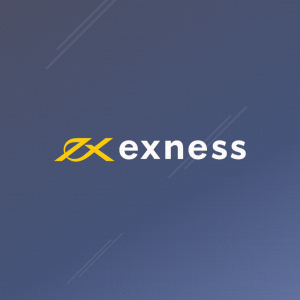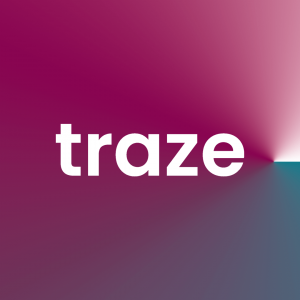
Almost 10 million people (about half the population of New York) worldwide trade forex thanks to the internet, and thousands of beginner traders are entering the markets daily. As such, many want to know which are the best forex pairs that a beginner can and should trade. Let’s find out.
As a beginner trader, this article will allow you to see and understand which forex pairs are best to get you on your trading journey. There are literally hundreds of forex pairs, and as a beginner trader, this can be overwhelming, but we look at why you should consider only four.
7 Best forex pairs for beginners (Comparison)
| Forex Pair | Base Currency | Quote Currency | Beginner Friendly | Major Currency Pair | Easy To Predict |
| EUR/USD | Euro | United States Dollar | Yes | Yes | Fairly Easy |
| USD/JPY | United States Dollar | Japanese Yen | Yes | Yes | Fairly Easy |
| AUD/USD | Australian Dollar | United States Dollar | Yes | Yes | Moderately Easy |
| USD/CAD | United States Dollar | Canadian Dollar | Yes | Yes | Moderately Easy |
| NZD/USD | New Zealand Dollar | United States Dollar | Yes | Yes | Moderately Easy |
| GBP/USD | British Pound | United States Dollar | Yes | Yes | Fairly Easy |
| USD/CHF | United States Dollar | Swiss Franc | Yes | Yes | Fairly Easy |
If you are new to trading, especially forex trading, you would want to know which are the best currency pairs to trade, along with which is the “easiest,” if there is even such a thing.
Even though online brokers may offer over 100 forex pairs to trade in some cases, this does not mean you, as a beginner, should go and start trading all of them. Moreover, there are only so many that professional traders, financial institutions, and retail traders focus on.
As a beginner, you should focus on the ones these professionals heavily invest in and narrow your field even further to the most popular traded currencies.
Thus, the best forex pairs to trade for a beginner are undoubtedly the major forex pairs. Hence, the best currency pairs that beginners should focus on are the following.
- EUR/USD
- USD/JPY
- GBP/USD
- USD/CHF
- AUD/USD
- USD/CAD
- NZD/USD
Understanding why these should be chosen and traded as a beginner is what we will detail next, and understanding these elements will help you on your way to being a better trader.
It will help if you consider that currencies hold different statuses, with some being stronger (“valuable”) than others.
In terms of the forex market, there is only a handful that is considered to have this valuable status and is actively traded, and they are the major forex pairs because these currencies are economically and politically stable. Let’s look at the major forex pairs and which are best for beginner traders.
1. EUR/USD
The EUR/USD, known as the “fiber,” is the ideal forex pair for beginners and day trading, as it represents the two largest economies in the world – the United States and the Eurozone. This major currency pair offers several advantages for small forex accounts and novice traders, such as high liquidity, low spreads, and readily available information.
As the most popular forex pair globally, the EUR/USD accounts for over one-third of the total forex trading volume, ensuring high liquidity and tight spreads. This high liquidity makes it the cheapest forex pair to trade, minimizing trading costs and maximizing profit potential for small account holders.
The EUR/USD is also the best currency pair for beginners, given its stability, predictability, and abundant news sources. The interest rate differential between the US Federal Reserve and the European Central Bank primarily influences the value of this currency pair. As such, monitoring economic and political factors affecting the base currency (euro) and the quote currency (US dollar) is crucial to make informed trading decisions.
The EUR/USD is a more stable option for beginner traders and day trading strategies compared to more volatile and exotic pairs. While the pair does experience price fluctuations, it is generally less susceptible to sudden, drastic changes.
In summary, the EUR/USD currency pair is the top choice for small forex account holders and beginners due to its high liquidity, low spreads, and relative stability. The wealth of information available for this popular forex pair makes it an excellent option for novice traders looking to develop their trading skills and strategies.
2. USD/JPY
The USD/JPY, also known as the “gopher,” is a popular forex pair among beginners and daytime traders, representing the exchange rate between the US Dollar and the Japanese Yen. This major currency pair accounts for 15% of total forex trading volume, making it highly liquid and attractive for investment.
Trading the USD/JPY offers several benefits for small forex account holders, including low spreads and relatively predictable price movements. Low spreads are essential for minimizing trading costs and maximizing profit potential, especially for traders with limited capital.
The predictability of the USD/JPY pair is due to the Bank of Japan’s frequent intervention in the market, which aims to maintain exchange rates and promote a competitive export market. This intervention results in a “dirty float” regime, where market forces do not solely determine the Yen’s value.
The USD/JPY is considered a “safe haven” for traders during market turmoil, thanks to Japan’s low domestic interest rate and deflation. When the market is unpredictable, traders may “buy” the Yen, effectively “shorting” the Dollar against it.
Furthermore, the USD/JPY provides insight into the relationship and tensions between the United States and Asian regions, particularly in the technology and e-commerce sectors. By monitoring these geopolitical factors, traders can develop informed strategies and capitalize on market movements.
In summary, the USD/JPY currency pair is an excellent choice for small forex account holders and beginners due to its low spreads, relatively predictable price movements, and “safe haven” status. Focusing on the USD/JPY and other similar major currency pairs allows traders with small accounts to invest wisely in the forex market, maximizing their chances of success and growth in their trading journey.
3. AUD/USD
The AUD/USD, known as the “Aussie,” is a popular forex pair for beginners due to its high correlation with commodity prices, making it an excellent choice for daytime trading. This major currency pair represents the Australian and US dollar exchange rate, accounting for 5.4% of daily forex trades.
As a leading coal and iron ore exporter, Australia’s economy and the value of the Australian Dollar are closely tied to commodity prices. Trading the AUD/USD currency pair allows small forex account holders to gain exposure to the commodity market without directly trading futures contracts. Monitoring commodity prices, particularly those crucial to the Australian economy, is essential when trading this pair.
The AUD/USD is a suitable choice for currency pair beginners and those seeking the best currency pair trading opportunities, as it offers relatively low spreads and high liquidity. However, traders must remain aware of potential volatility due to fluctuations in commodity prices and announcements from the Reserve Bank of Australia and the Federal Reserve, as these can significantly impact the currency pair’s movements.
In conclusion, the AUD/USD is an appealing option for forex pair beginners and those interested in day trading. By closely monitoring commodity prices and central bank announcements, traders can make well-informed decisions and invest wisely in the forex market, maximizing their chances of success and growth in their trading journey.
4. USD/CAD
The USD/CAD, also known as “Loonie,” is a popular forex pair for beginners due to its strong correlation with oil prices and the close economic ties between the US and Canada. It represents the exchange rate between the United States and Canadian Dollar as a major currency pair. This pair is suitable for day time trading and can offer appealing opportunities for those seeking the best currency pair trading experience.
When trading the USD/CAD, monitoring oil prices is essential, as Canada’s economy relies heavily on crude oil exports. Consequently, fluctuations in oil prices have a significant impact on the Canadian Dollar’s value. Understanding this correlation can help beginner traders make informed trading decisions, allowing them to capitalize on price movements in the forex market.
The USD/CAD pair typically has tight spreads and high liquidity, making it an attractive option for currency pair beginners. However, it’s important to remain aware of potential volatility due to fluctuations in oil prices, geopolitical events, and economic announcements from both countries.
In summary, the USD/CAD is suitable for forex pair beginners and those interested in day trading. By closely monitoring oil prices and other relevant factors, traders can make well-informed decisions and invest wisely in the forex market, maximizing their chances of success and growth in their trading journey.
5. NZD/USD
The NZD/USD, commonly known as the “Kiwi,” is a popular forex pair for beginners seeking to diversify their trading portfolios. As a minor currency pair, it represents the exchange rate between the New Zealand and US dollar. The Kiwi is closely linked to the New Zealand economy, which relies on agriculture and tourism, making it an interesting currency pair for daytime trading.
When trading the NZD/USD, it’s essential for forex pair beginners to monitor factors that influence the value of both currencies. For example, dairy prices can significantly impact the New Zealand dollar’s value, as the country is a leading exporter of whole milk powder. Tourism trends and interest rate differentials between the Reserve Bank of New Zealand and the US Federal Reserve can also affect the NZD/USD pair.
Though not considered (by some) a major currency pair, the NZD/USD still attracts considerable trading volume, making it a popular forex pair among traders. Trading the Kiwi can provide a unique opportunity to invest in a currency pair that is influenced by different economic factors compared to more traditional forex pairs.
To succeed in trading the NZD/USD, it’s crucial for small account holders to monitor relevant economic indicators and consider factors such as spreads and liquidity. By keeping an eye on these elements and employing sound risk management strategies, traders can benefit from trading this unique and engaging currency pair in the forex market.
6. GBP/USD
The GBP/USD, also known as the “cable,” is a major currency pair that represents the exchange rate between the British pound and the United States dollar. This popular forex pair accounts for 15% of total traded volume in the forex market, making it one of the top 5 most traded currency pairs globally.
Trading GBP/USD can be an attractive option for beginners and daytime traders due to its high liquidity, which allows for easier buying and selling of the currency pair. However, it is essential to note that this forex pair tends to have higher volatility compared to others, making it better suited for short-term aggressive trades.
The Bank of England (BoE) and the US Federal Reserve are the primary influencers of the exchange rate between these two currencies. When the US Federal Reserve intervenes to strengthen the Dollar, the GBP tends to decline against it.
For small forex account holders looking to trade GBP/USD, it is crucial to employ careful risk management strategies due to the pair’s volatility. These strategies include setting appropriate stops and limits, diversifying your portfolio with other major and minor currency pairs, and staying informed about the latest economic and political developments affecting the pound and the Dollar.
In summary, the GBP/USD is a popular and highly liquid forex pair that can offer beginners and small account holders opportunities. However, its higher volatility requires traders to exercise caution and implement proper risk management techniques when engaging in day trading or investing in this currency pair.
7. USD/CHF
The USD/CHF, a major currency pair representing the exchange rate between the US dollar and the Swiss franc, is an attractive option for forex pair beginners and those interested in daytime trading. As a highly liquid pair with tight spreads, it offers benefits for small account holders, including easier entry and exit points and reduced trading costs.
The Swiss franc is considered a safe-haven currency, making the USD/CHF an ideal choice for traders seeking diversification and risk management. This currency pair typically has an inverse correlation to other pairs like the EUR/USD and GBP/USD, which means when those pairs decline, the USD/CHF will usually rise.
The Federal Reserve and the Swiss National Bank (SNB) influence the price of this currency pair based on their interest rate differential. However, other factors like employment data and Gross Domestic Product (GDP) can also affect the economics of a country and ultimately influence interest rates and forex pair prices.
In summary, the USD/CHF is a popular forex pair for beginners and small account holders looking for a more stable trading option. Its inverse correlation to other major currency pairs, tight spreads, and high liquidity make it an excellent choice for traders seeking diversification and risk management in their day trading and investment strategies.
What are the Major Forex Pairs?
The currency pairs that are the most popular (meaning the forex pairs that are traded the most) in the world are called the Major Forex Pairs. These forex pairs account for approximately 85% of the entire foreign exchange market. Due to this, they are considered too, in fact, drive the entire global forex market, and thus are the most heavily traded and exhibit high market liquidity.
The USD (United States Dollar) is considered to be the strongest and most traded currency globally. For this reason, other currencies that are traded against it will make up the majority of the major forex pairs.
How many Major Forex Pairs are there?
Now there are considered to be many major forex pairs; however, the four major forex pairs to date would have to be the following;
- EUR/USD
- USD/JPY
- GBP/USD
- USD/CHF
These are considered to be the main forex pairs and ones that a beginner should initially start looking at when they are learning to trade. However, there are another three currency pairs that many believe should be added to the major currency pairs list, and these are namely (and which we have now discussed);
- USD/CAD
- AUD/USD
- NZD/USD
The Australian Dollar and New Zealand Dollar are considered to be emerging market currencies and investors (in a risk-on situation) like to take long positions on these currencies because of the return they tend to yield. However, as a beginner, these pairs can be overlooked until experience in the forex market, and trading as a whole is gained.
How many Forex Pairs are there?
There are approximately 154 currencies that 221 countries use which are listed on the United Nations Treasury list. If we had combined and computed all the forex pair combinations, we would end up with 11781 forex pairs in total.
However, for trading purposes, there are only about 70 forex pairs that traders and investors will take positions on and use for investing. It should be noted that online brokers (depending on who they are and what forex access they have) may offer up to 130 currency pairs that you will be able to trade.
What about Minor Forex Pairs for Beginners?
Beginner traders might consider trading minor forex pairs for various reasons, such as diversifying their portfolio or gaining exposure to different economies. However, trading minor pairs also comes with challenges that may not be suitable for currency pair beginners.
Unlike major pairs like the USD/JPY or the EUR/USD, minor forex pairs involve currencies that are not the US dollar. Examples of minor pairs include the GBP/JPY and the AUD/NZD. While these pairs can offer attractive day trading opportunities, they often come with wider spreads, increasing trading costs and making it harder to achieve consistent profits.
One advantage of trading minor pairs is that they may be less correlated to popular forex pairs, providing an opportunity for portfolio diversification. Additionally, trading minor pairs can help traders gain exposure to various economies, enhancing their understanding of global markets.
On the flip side, minor pairs tend to have lower liquidity than major pairs, which can lead to higher price fluctuations and increased volatility. This can be both a benefit and a drawback for beginners, as greater price movements can lead to higher potential profits but also increased risk.
While minor forex pairs can offer unique opportunities for beginner traders, they also come with challenges, such as wider spreads, lower liquidity, and increased volatility. Beginners should carefully weigh the pros and cons before deciding to trade minor pairs and ensure they employ proper risk management strategies to protect their investments while day trading.
What about Exotic Forex Pairs for Beginners?
Trading exotic forex pairs may be a consideration for beginner traders who want to explore unique markets and gain exposure to emerging economies. However, the challenges associated with exotic pairs may not be ideal for those new to forex trading.
Exotic forex pairs consist of a major currency like the US dollar paired with a currency from an emerging or smaller economy. These pairs can offer intriguing trading possibilities, but they often come with increased volatility and wider spreads, raising trading costs and risks. For example, USD/SEK (US dollar and Swedish krona) and USD/MXN (US dollar and Mexican peso) are exotic pairs.
One motivation for trading exotic pairs is the potential to take advantage of specific economic events or developments in emerging markets. Additionally, exotic pairs can enhance diversification, as they tend to be less correlated with major and minor pairs.
However, exotic pairs generally exhibit lower liquidity compared to major and minor pairs, leading to more significant price fluctuations and heightened volatility. While greater price movements can result in higher potential profits, they also amplify risk, which can be a double-edged sword for beginners.
Moreover, trading exotic pairs typically necessitates more comprehensive research and understanding of local economies, political situations, and other factors that can influence currency values. This may prove challenging for beginner traders still mastering forex trading fundamentals.
In summary, while exotic forex pairs present unique opportunities for beginner traders, they also pose challenges like wider spreads, reduced liquidity, and increased volatility. Before opting to trade exotic pairs, beginners should weigh these factors carefully and ensure they employ proper risk management strategies to safeguard their investments during day trading.
Conclusion
In conclusion, the seven major forex pairs—EUR/USD, USD/JPY, GBP/USD, USD/CHF, AUD/USD, USD/CAD, and NZD/USD—are ideal choices for beginners and small account holders because they offer numerous advantages that cater to their needs. These pairs are known for their high liquidity, tight spreads, and well-established trading patterns, making them the best currency pairs for trading in terms of cost and accessibility.
As the most popular forex pairs, these seven are backed by strong economies and are subject to extensive analysis and data availability, enabling beginner traders to make informed decisions. Additionally, major pairs typically exhibit lower volatility compared to minor and exotic pairs, reducing the risk of sudden, unexpected price fluctuations.
Furthermore, trading these pairs enables beginners to focus on mastering fundamental and technical analysis and day trading strategies before venturing into more complex and volatile markets. By starting with major forex pairs, beginner traders can build a solid foundation and progressively enhance their skills before exploring minor or exotic pairs.
Overall, the seven major forex pairs provide a favorable environment for beginners to gain experience and develop their trading abilities, ultimately setting them up for long-term success in the forex market.
FAQs
What is the safest forex pair to trade?
The safest forex pair to trade is often considered to be the EUR/USD, as it has the highest liquidity and tightest spreads among all currency pairs TMM. This major pair consists of two strong economies, the Eurozone and the United States, which adds to its stability. However, it is essential to note that no forex pair is entirely risk-free, and trading always involves some level of risk.
When is the best time to trade forex pairs?
The best time to trade forex pairs is when the markets are most active, resulting in higher liquidity and tighter spreads. This typically occurs during overlapping market sessions. The primary forex trading sessions are the Tokyo, London, and New York sessions. The most active trading hours are:
- London and New York overlap (8 AM to 12 PM EST): This period sees the highest trading volume, making it the best time for day trading major pairs, particularly those involving the USD, EUR, and GBP.
- London and Tokyo overlap (3 AM to 4 AM EST): This overlap is ideal for trading Asian and European currency pairs, such as the EUR/JPY or AUD/JPY.
Keep in mind that the best time to trade also depends on your specific trading strategy and the currency pairs you’re focusing on. Some strategies may be more effective during specific market sessions or at certain times of the day.
How many forex pairs should a beginner trade?
Although there are four major forex pairs that a beginner can and should trade in order to learn how to invest, only one or two should be traded at a time. It will help if you remember that trading is a skill and is not gambling.
Many subconscious and conscious decisions based on information (news, technical analysis, economics, etc.) will play a role in opening a position; your focus needs to be centered.
As such, beginner traders should stick to the EUR/USD or the USD/JPY due to the amount of information and resources that is available for this currency pair.
What are the best Pairs to trade in forex?
The best pairs to trade in forex are the major pairs. Although four are considered to be the strongest, others can be included and offer investors good opportunities. These include;
- EUR/USD
- USD/JPY
- GBP/USD
- USD/CHF
- AUD/USD
- NZD/USD
- USD/CAD
What is the easiest forex pair to trade?
There are two “easy” forex pairs that you can trade. The first is the USD/CHF. This is because when the EUR/USD and GBP/USD go down, this currency pair goes up due to its inverse correlation to them.
The next is the USD/JPY. The Yen is considered a safe haven, which means that when the markets are in a period of “risk-off” (the markets are in turmoil), traders tend to buy the Yen (short the Dollar against it) due to it being stable.

















